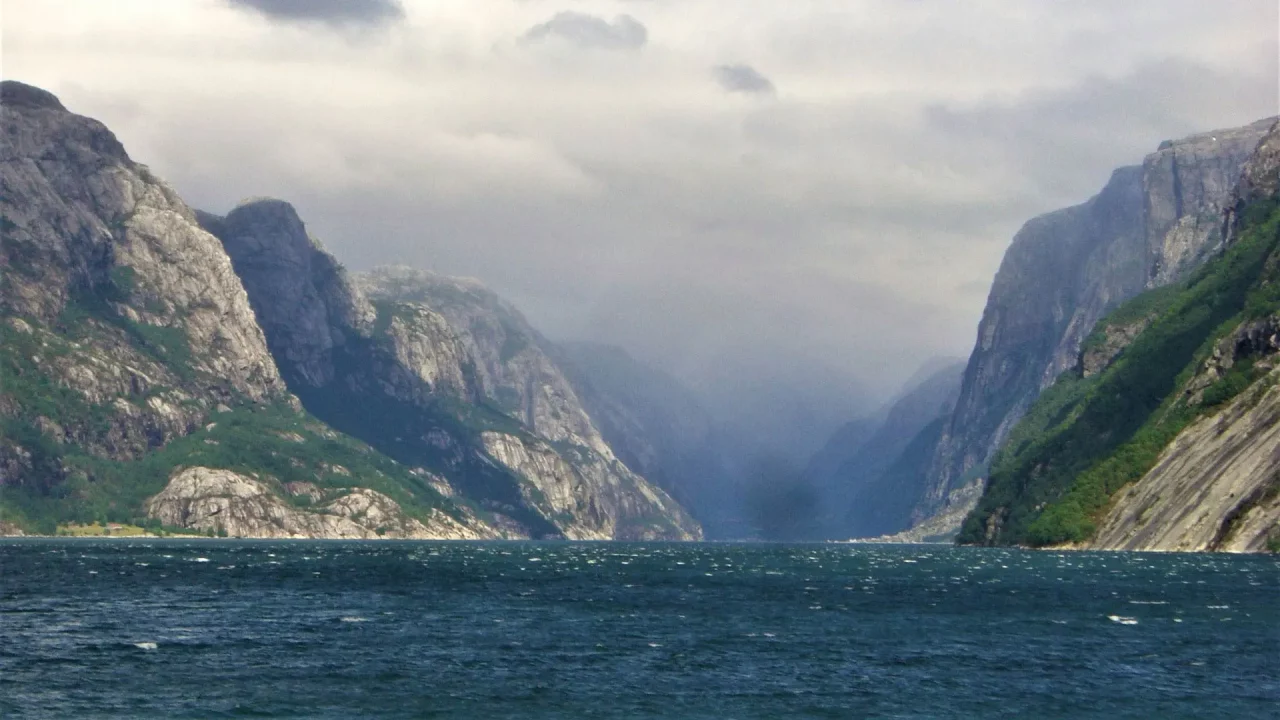The fjords of Norway are famous, and they are excellent destinations. On Sandalsand, you will find a number of articles about them. Do not leave your armchair before you have read this introduction.
The fjord phenomenon
The fjords may not have the same grim impact on you as the famous Norwegian painter wrote in his diary before he painted his masterpiece, “The scream”. On the other hand, the fjords will leave no visitor untouched.
Today we may feel gratitude towards the glaciers of the latest ice age. When they melted they left a large number of U-shaped valleys. Some of these valleys came in contact with the sea and were filled up with salt water forming fjords.
As a native Norwegian, I have been touring this region for a lifetime. I have collected some of my stories and published them here.
I was walking along a path with two friends – the sun was setting – suddenly the sky turned blood red – I paused, feeling exhausted, and leaned on the fence – there was blood and tongues of fire above the blue-black fjord and the city – my friends walked on, and I stood there trembling with anxiety – and I sensed an infinite scream passing through nature. (Edvard Munch)
Fjords as a geological phenomenon
Wikipedia defines a fjord as “a long, narrow inlet with steep sides or cliffs, created in a valley carved by glacial activity”. There have been several ice ages, periods where a large ice cape covered the land beneath it. The last one over the Northern Hemisphere including Norway melted around 10,000 years ago.
Some glaciers still exist but the lasting impression of the glaciers is the large number of U-shaped valleys that formed when the glacier retreated during the melting of the ice. Some of these valleys met the sea and filled up with salt water, forming fjords.
V-shaped valleys are the result of rock slides and rivers eroding the rock for thousands of years. The glaciers did the hard work. But also rock properties, movements of the earth’s crust, melting water, landslides and rivers contributed to making the fjords.
I had always believed that the Sognefjord was the longest and deepest fjord in the world. Researching this article, that wisdom fell to the ground. It is the second longest (204 km) and second deepest (1,308 m). So be it.
Counting from the highest mountain top (Bleia at 1,717 m) on the Sognefjord to the bottom of the fjord, the combined height is 2,850 metres. The Grand Canyon in the US is in comparison 1,600 metres at the deepest.
Read more about the Norwegian fjords from a geologist’s point of view.
Fjords from a tourist’s point of view
A tourist is most likely looking for the spectacular aspect of a fjord, not the geological. What draw most attention are the high, often vertical cliffs and mountains towering over the clear, blue sea. Often, even in summer, the high and dark mountains have a coat of snow around the summits. That may be a glacier or merely last year’s snow that has refused to melt. If you are lucky, there’s even a blue sky and a warming sun high above.
Let me just add that UNESCO also has this description:
“Remnants of old and now mostly abandoned transhumant farms add a cultural aspect to the dramatic natural landscape that complements and adds human interest to the area.”
I agree.
The best ways to visit the fjords of Norway is on road and on foot. Road travel can be quite an adventure on its own, and you are still able to cross a fjord on a ferry. Even though a large number of tunnels go right through the mountains, there are also several exciting mountain crossings open, particularly during the summer months. You do not have to do it by car, there are bus services just about everywhere.
Another very popular way of visiting Fjord Norway is on a cruise liner, or on the many regular ferries. Travelling by rail in the fjords is obviously not possible, with one great exception. The railway line between Oslo and Bergen is great, and the detour down the Flåm valley is a world-class destination. You can combine this track with a boat trip out the fjord, forming the Norway-in-a-Nutshell classic tour. (Read my description.)
This post was first published in July 2013 as a page in the Norway sections, and was transformed into an ordinary post in March 2022 with few changes.


